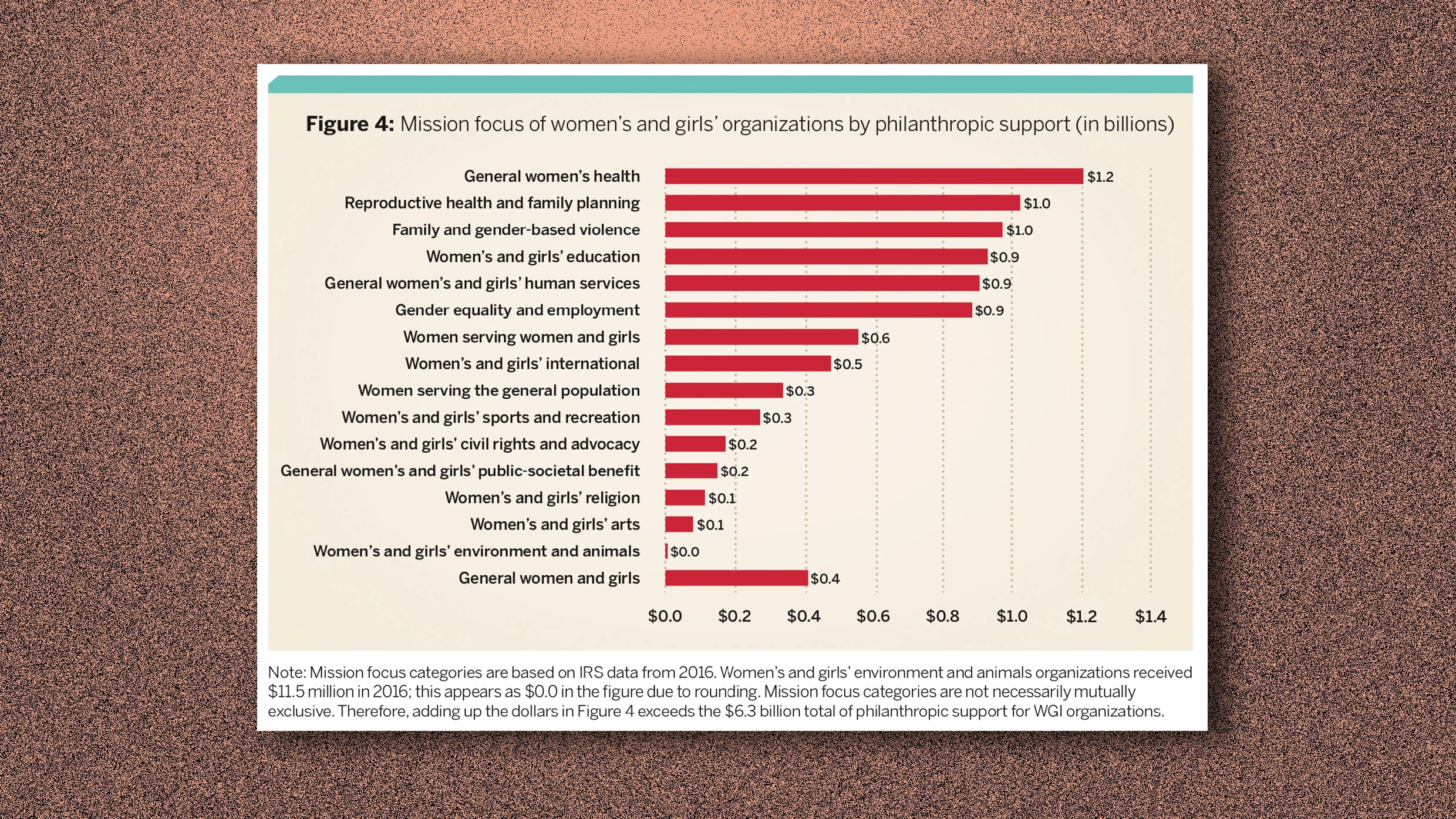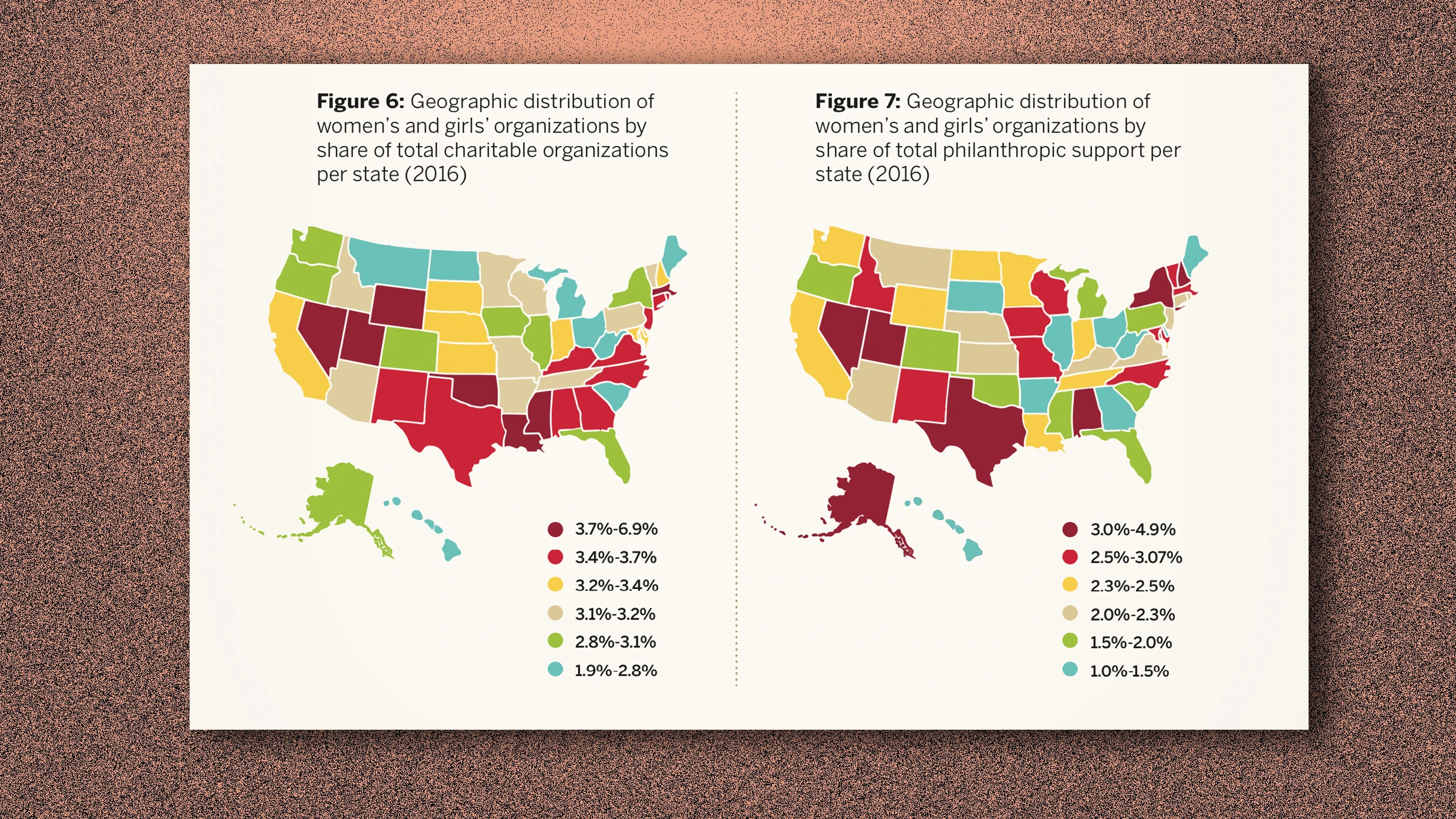In early October, Melinda Gates pledged to spend $1 billion over the next decade to help close the gender equality gap. She explained that nonprofits battling women-specific issues are radically underfunded. (They get about $1 for ever $5 spent on arts programs or $10 put toward higher education in general.) And 90% of that goes toward one cause area: reproductive health.
Gates has specific ways she’ll spend the cash, such as promoting professional advancement, pushing for more diversity in fields that are reshaping society (like tech and politics), and encouraging others to use their own financial influence to the same end. For others who might heed that call, though, there’s a knowledge gap: How many organizations are trying to make that kind of change anyway? What do they look like, and what areas are most chronically underfunded?
To assist in that, the Women’s Philanthropy Institute just launched the Women and Girls Index, a public database of the country’s charities dedicated largely to women’s causes or that are female-led collectives trying to make change from their own perspective. To build it, the institute analyzed available public 990 tax filings by group name, mission statement, and program descriptions.

Out of the more than 1.3 million active charities, only 45,000 are doing this work. That’s just 3.3% of the nonprofit sector. These groups received $6.3 billion in donations from donors between 2012 and 2015, just 1.6% of all charitable giving. As a result, many of these groups remain small, with limited operating costs and employees.
“We felt like having this research would be useful to those who are interested in investing in these causes,” says Tessa Skidmore, a visiting research associate at WPI and co-author of a report summarizing the findings.
The analysis is current through 2016, which leaves out whether the country’s more recent rallying against injustices against women—from the Women’s March to #TimesUp and the #MeToo movement—has translated into more directed forms of giving. WPI plans to update their data annually.

In terms of the overall ecosystem, human services groups (like the YWCA) make up the biggest portion of recipients at 35%. That’s followed by groups dedicated to mutual, public, and societal benefit at 23%. Arts and cultural groups place third at 13% of the total potential beneficiaries, with female-focused health and education operations behind that.
For total financial support given to these categories, however, the rankings are different. Health groups receive the most total dollars of funding, followed by groups focusing specifically on reproductive health and organizations focused on stopping family and gender-based violence.
WPI also mapped on a state-by-state level where these groups tend to cluster and which states seem to generate the most funding. Three places that rank in the bottom tier in both: Ohio, Maine, and West Virginia. Overall, the small size and general underfunding of these groups may limit their ability to build out other revenue streams or financial safety nets, making them more reliant on donations. That’s not a great strategy for success, something more and more people are concerned about.
“It certainly is an interesting juxtaposition,” says Skidmore. “We are seeing more public attention on these issues, but the data on charitable giving at this point in time isn’t necessarily reflecting that. People are really paying attention to these areas. We need more research to really know how those sort of actions correspond with charitable giving.”
Recognize your brand’s excellence by applying to this year’s Brands That Matter Awards before the early-rate deadline, May 3.
